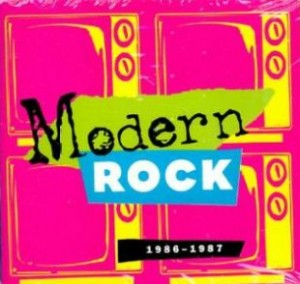 I listen to a lot of rock and roll radio here in the San Francisco Bay Area and all over the world via my Android mobile. A lot of these stations define themselves as either “modern” or “classic” rock frequencies. But I’m starting to wonder how long the original distinction between the two genres can prevail, given rapidly changing age demographics.
I listen to a lot of rock and roll radio here in the San Francisco Bay Area and all over the world via my Android mobile. A lot of these stations define themselves as either “modern” or “classic” rock frequencies. But I’m starting to wonder how long the original distinction between the two genres can prevail, given rapidly changing age demographics.
At this point, the modern/classic binary is still going strong. Take San Francisco/San Jose “classic rock” station KUFX. The station’s top hits list includes Queen – “Crazy Little Thing Called Love,” U2 – “Still Haven’t Found What I’m Looking For,” ZZ Top – “Give Me All Your Lovin,” Van Halen – “Pretty Woman,” and Bad Company – “Rock and Roll Fantasy.”
That’s all pretty classic classic rock, as far as I’m concerned. But other classic stations in the same genre are starting to integrate what I’ve always regarded as modern rock tunes into their playlists. For example, there’s the Sky.fm online station. Sky also claims the classic rock category, but brands itself as offering “a diverse and exciting selection of classic rock hits, ranging from 70’s British hard rock to 80’s progressive rock.”
Last I checked, Sky.fm hits included selections from The Cars, Peter Gabriel, and David Bowie. Are these classic rock artists? Is John Mellencamp, also featured on the station, really classic rock?
Hot stuff
What is the actual historical difference between classic and modern rock anyway? Some years ago I ran into a guy selling copies of The Art of Modern Rock at the Metreon in San Francisco. I asked him when he thought “modern” rock began and “classic” rock ended. He seemed sort of annoyed by the question, so I left him alone.
My guess is that Disco serves as the original historical marker between classic and modern rock. Between 1974 and 1979, Disco disrupted Rock in huge ways. It stole a sizeable chunk of Rock’s audience, causing a huge anti-Disco backlash. The story is nicely told in Alice Echols’ great book, Hot Stuff: Disco and the Remaking of American Culture.
When Rock made its comeback in the early 1980s, it did so by borrowing Disco’s thunder. “New wave” bands like The Cars, Devo, Oingo Boingo, Prince, The Talking Heads, and Blondie appropriated the hard 4/4 beat and urbane sound that bands like Chic and Rick James perfected. Artists like John Mellencamp and Bruce Springsteen didn’t go that route, obviously, but their songs about post-industrial America clearly acknowledged that the sixties were over. So did Bowie with lyrics like “Do you remember your President Nixon? Do you remember the bills you have to pay? Or even yesterday?”
So in a historical sense, “modern” and “classic” rock can really be defined as pre- and post-Disco rock. Modern rock really took off after Disco unexpectedly declined following the spectacular release of Saturday Night Fever in 1977. But in a practical sense, when surveying modern/classic rock radio stations, it’s getting more difficult to detect the clear, bright line between the two genres.
Modern = new
Now, in addition to the blurring between pre- and post-Disco rock circa 1980, there are modern rock radio stations like 99Rock that have moved way beyond that era. Their version of modern rock is Green Day, or Cake, or even Celo Green.
Thus, modern rock is now relatively new rock. Modern rock as it emerged in the 1980s is 80s nostalgia. Everything pre-1990 that still makes it to playlists has itself becomes a “classic” (even if it was once “modern”), and the historical events that actually created the modern/classic rock distinction are slowly being forgotten in the process.
This doesn’t mean that radio stations can’t still call themselves “classic” or “modern.” They can call themselves whatever they want. But the original difference between the two terms, rooted in cultural events, is fading from memory as the generations change.


